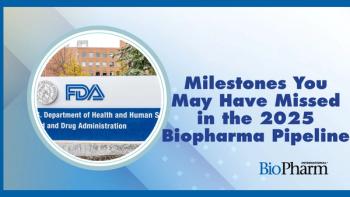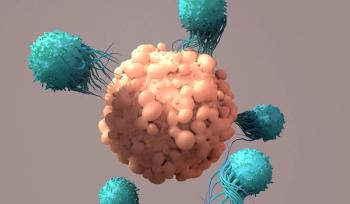
- BioPharm International-08-01-2006
- Volume 19
- Issue 8
From the Editor in Chief: Science, Control, and the Seemingly Uncontrollable
Is it possible to reconcile phage therapy, which is inherently variable, with requirements for tight product characterization and control?
What do you do about something that seems incredibly useful, but is inherently uncontrollable? This is the challenge posed by phage therapy.
Phage therapy appears to be an elegant solution to the problem of bacterial resistance to antibiotics. Phage therapy is not new; it has been practiced since the early 1900s, most notably Russia. The principle is fascinating: it uses bacteriophages, tiny viruses that live by infecting and destroying specific bacteria. Phage therapy avoids the resistance problem because the phages evolve as the bacteria evolve. Biology adapts to biology; both organisms evolve and flow in relation to each other.
Laura Bush
The challenge lies in ensuring the safety of such therapy, and even proving its efficacy using traditional approaches to clinical trial design. In hopes of getting FDA approval, some companies are working on ways to modify phages so that they can characterize and control the phages better, but these approaches run the risk of eliminating the very feature that was desired: the ability of the living organism to adapt and remain effective against mutating bacteria that cause infection and death.
In today's biopharmaceutical industry, regulatory authorities and companies alike strive to apply good science to every action, particularly in manufacturing controls. The days when we ran a manufacturing step for X minutes because "it seems to produce good quality" are on their way out. Today's approach applies manufacturing science to achieve in-depth process understanding; process developers identify the critical quality attributes required in the end product and the critical process parameters that will ensure that those quality attributes are achieved consistently. As a result, a quiet revolution in process validation is taking place. Instead of believing that three successful batches in a row means a process is validated, companies are using design of experiments up front to develop robust process understanding and a defined design space, so that they have knowledge, backed by hard data, about the allowable limits of process variability.
FDA has been at the forefront of this drive to apply sound science, starting in 2002 with its CGMP and PAT initiatives. Now FDA is on to the next stage, implementing new harmonized approaches, rooting out old guidances that reflect outdated thinking, and working to revise the guidance on process validation to reflect a scientific approach. The agency is restructuring offices and systems involved in reviewing applications for new product approvals. In short, FDA is hammering away to ensure that this thinking pervades every level of the organization and every aspect of what they do, from each review of an investigational new drug application to every site inspection.
Can this emphasis on careful control be reconciled with phage therapy, the very effectiveness of which lies in its variability?
I can't envision a way to ensure the safety and efficacy of phage therapy that follows the rigorous scientific approaches that FDA and industry apply to protect patients. Is there a creative solution? I hope so. In the meantime, some companies are starting by finding applications in agriculture. Perhaps those will lead us to a way to resolve this fascinating conundrum.
Articles in this issue
over 19 years ago
Successful Bioreactor Installation: What it Takesover 19 years ago
Regulatory Beat: Biologics Oversight Challenges Federal Regulatorsover 19 years ago
StreetTalk: Transition at the Fed: From Greenspan to Bernankeover 19 years ago
Biopharmaceuticals: Approval Trends in 2005over 19 years ago
Applying Process Analytical Technology to Biotech Unit OperationsNewsletter
Stay at the forefront of biopharmaceutical innovation—subscribe to BioPharm International for expert insights on drug development, manufacturing, compliance, and more.





